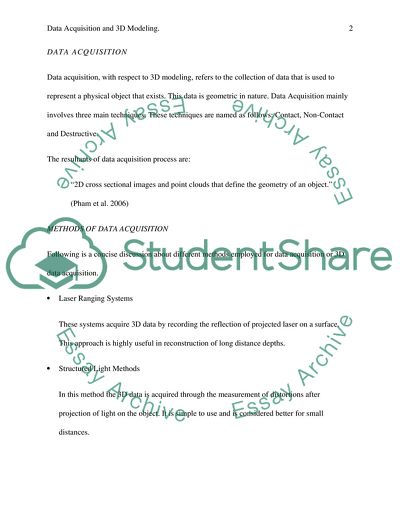Cite this document
(“Data Acquisition and 3D Modelling Essay Example | Topics and Well Written Essays - 1500 words”, n.d.)
Retrieved from https://studentshare.org/information-technology/1578049-data-acquisition-and-3d-modelling
Retrieved from https://studentshare.org/information-technology/1578049-data-acquisition-and-3d-modelling
(Data Acquisition and 3D Modelling Essay Example | Topics and Well Written Essays - 1500 Words)
https://studentshare.org/information-technology/1578049-data-acquisition-and-3d-modelling.
https://studentshare.org/information-technology/1578049-data-acquisition-and-3d-modelling.
“Data Acquisition and 3D Modelling Essay Example | Topics and Well Written Essays - 1500 Words”, n.d. https://studentshare.org/information-technology/1578049-data-acquisition-and-3d-modelling.


